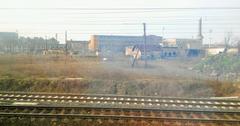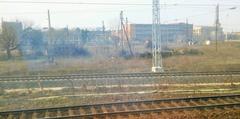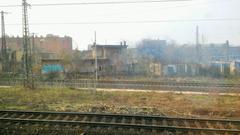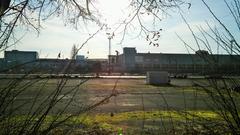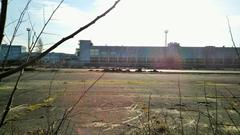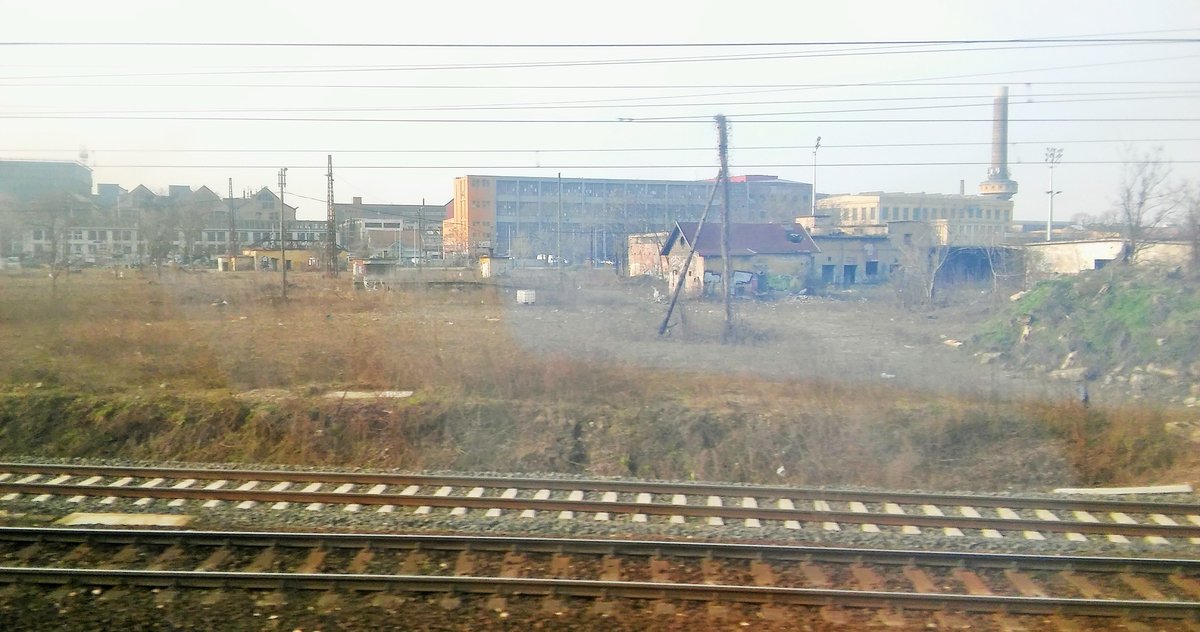
Józsefváros Railway Station Budapest: Visiting Hours, Tickets, and Complete Guide
Date: 14/06/2025
Introduction: Józsefváros Railway Station’s Historic Legacy
Józsefváros Railway Station, nestled in Budapest’s lively 8th District, is a notable emblem of the city’s rich railway heritage and urban transformation. Established in 1867 as the terminus of the Pest–Losonc–Salgótarján line, the station reflects the rapid industrialization and dynamic history of Budapest. While it ceased passenger operations in 2005, its distinctive architecture and enduring cultural significance continue to draw visitors interested in Hungary’s transportation legacy and the evolving Józsefváros district. This guide presents essential information on visiting Józsefváros Railway Station, including practical details on accessibility, transportation, and nearby attractions. Whether you’re a history enthusiast or a curious traveler, this comprehensive guide will help you make the most of your visit to this landmark and its vibrant surroundings.
For in-depth historical context, refer to resources such as PestBuda, MÁV, and additional references listed at the end.
Table of Contents
- Introduction
- History and Architecture of Józsefváros Railway Station
- Visiting Hours and Accessibility
- Ticketing and Guided Tours
- Nearby Attractions
- Transportation and Connectivity
- Frequently Asked Questions (FAQ)
- Conclusion
- Sources and Further Reading
History and Architecture of Józsefváros Railway Station
Historical Background
Józsefváros Railway Station was inaugurated on 19 May 1867, originally serving as a critical terminus for the Pest–Losonc–Salgótarján line. Initially managed by the Hungarian Northern Railway Company, it was taken over by the Hungarian Royal State Railways (MÁV) in 1869 due to financial challenges. The station was crucial to Budapest’s industrial development and one of three main terminals in the 19th century, shaping the city’s urban landscape and connectivity.
After the opening of Keleti Railway Station in 1884, Józsefváros shifted its focus to freight and supplementary passenger services, continuing in this role until its closure to passengers in 2005. Today, it remains an architectural and historical highlight in District 8, symbolizing Budapest’s changing urban fabric.
Architectural Features
The station showcases 19th-century industrial architecture, with a robust yet elegant facade. Its design, while functional, features classic elements typical of the era, making it a point of interest for architecture lovers and history buffs alike.
Visiting Hours and Accessibility
Access and Opening Hours
- Current Status: Józsefváros Railway Station is not open to the public as an operational train station or museum.
- Viewing: Visitors can view and photograph the exterior of the station at any time. The surrounding area is accessible on foot and via public transport.
Accessibility
- Public Transport Access:
- Nearest Metro Stations: II. János Pál pápa tér (M4) and Corvin-negyed (M3)
- Tram and Bus Lines: Multiple tram and bus lines operate along Kőbányai and Fiumei Roads
- Mobility: The station itself has limited accessibility features due to its age and closure. For better barrier-free access, use Keleti or Nyugati stations.
Ticketing and Guided Tours
- Tickets: No tickets are required, as the station is not operational for passenger services or as a museum.
- Guided Tours: While official tours inside the station are not available, many local walking tours of Józsefváros include the station’s exterior and historical context. Check with reputable tour providers for district heritage walks.
Nearby Attractions
Józsefváros is rich in historical and cultural sites within easy reach of the station:
- Kerepesi Cemetery: One of Europe’s grandest cemeteries, known for its elaborate monuments.
- Hungarian National Museum: An iconic institution tracing Hungarian history (Hungarian National Museum).
- Hungarian Natural History Museum: Features impressive natural science exhibits, including a whale skeleton (Hungarian Natural History Museum).
- Erkel Theatre: A major venue for opera, ballet, and concerts.
- Orczy Garden: A tranquil urban park ideal for relaxation.
- Holocaust Memorial Center: A poignant museum dedicated to the memory of Hungarian Jewish victims.
- Corvin-Szigony Urban Renewal Area: Showcases modern urban regeneration.
- Magdolna Quarter: Known for community-led urban renewal projects.
The district also offers vibrant markets, local cafés, and unique street art.
Transportation and Connectivity
Metro and Tram
- Metro Lines:
- M2 (Red Line) at Keleti pályaudvar and Blaha Lujza tér
- M3 (Blue Line) at Corvin-negyed and Kálvin tér
- M4 (Green Line) at II. János Pál pápa tér and Keleti pályaudvar
- Tram Lines: Frequent services on lines 4, 6 (Grand Boulevard), and 24 (connecting with key districts)
Bus and Suburban Rail
- Bus 9: Connects Józsefváros with other parts of Budapest
- HÉV Suburban Rail: Available via transfer points for trips to Budapest’s outskirts
Taxi, Rideshare, and Bicycle
- Taxis: Use licensed yellow cabs for safety.
- Rideshare: Services such as Bolt and Főtaxi operate in the area.
- Cycling: MOL Bubi bike-sharing stations are nearby.
Parking
- Street Parking: Limited and often paid; public transport is recommended.
Airport Connectivity
- 100E Airport Express Bus: Links the airport to city hubs, with easy Metro/tram transfer to Józsefváros.
Night Transport
- Night Buses and Trams: Operate throughout the district for late-night travel.
Frequently Asked Questions (FAQ)
Q: Can I enter the Józsefváros Railway Station building?
A: No, the station is closed to the public. The exterior is accessible for viewing and photography.
Q: Are there guided tours available?
A: No official station tours exist, but many walking tours of District 8 include the site.
Q: How do I get to Józsefváros Railway Station?
A: Use Metro lines M3 or M4, trams 4, 6, or 24, or several bus lines. Walking and cycling are also convenient.
Q: Is the station area safe?
A: The district has improved in safety in recent years. Practice standard precautions, especially after dark.
Q: Where can I buy train tickets in the area?
A: For active train travel, use nearby Keleti or Nyugati stations, or purchase via the MÁV official website.
Conclusion
Józsefváros Railway Station remains a compelling symbol of Budapest’s railway past and urban evolution. Although closed to passengers, its historic facade and strategic location offer visitors a unique lens into the city’s industrial heritage. Surrounded by museums, parks, and cultural venues, the station area is perfect for those seeking an authentic Budapest experience. For the best insights, consider joining a local heritage walk and explore the district’s dynamic blend of old and new.
For the latest updates on heritage sites, tours, and city events, download the Audiala app and follow official Budapest tourism resources.
Sources and Further Reading
- PestBuda
- Hungarian National Museum
- MÁV (Hungarian State Railways)
- Budapest Public Transport
- Hungarian Natural History Museum
- Just Budapest
- The Broke Backpacker
- Emily Embarks
- Destination Daydreamer
- Daily News Hungary
- Budapest Tourism
